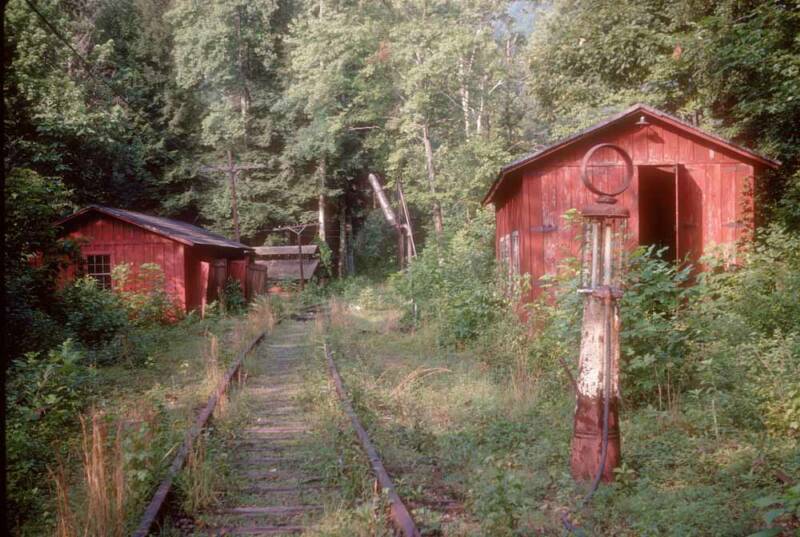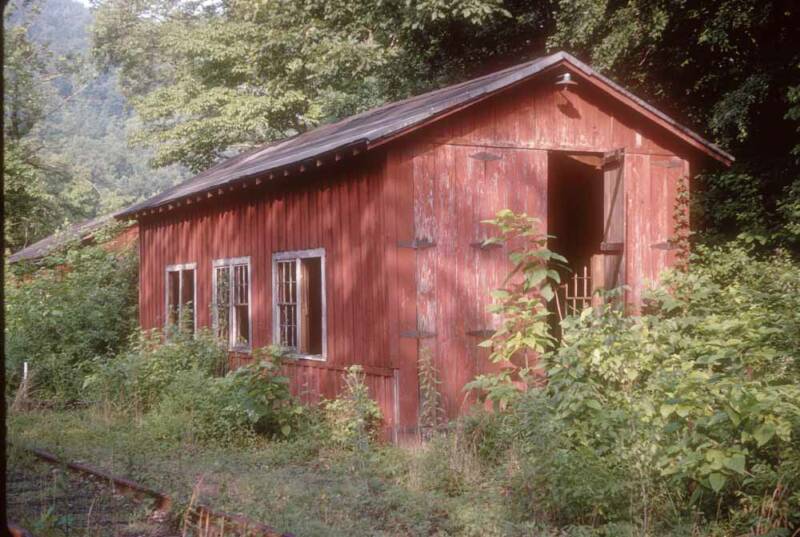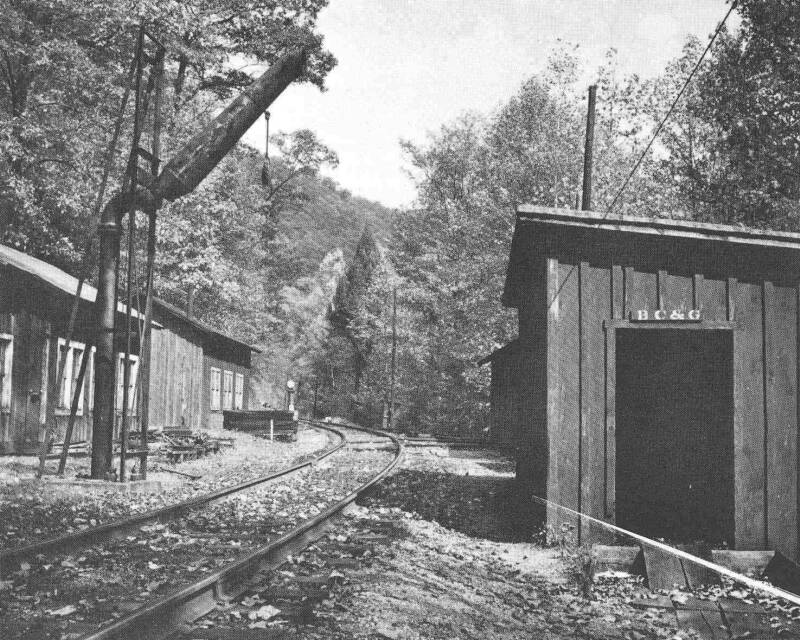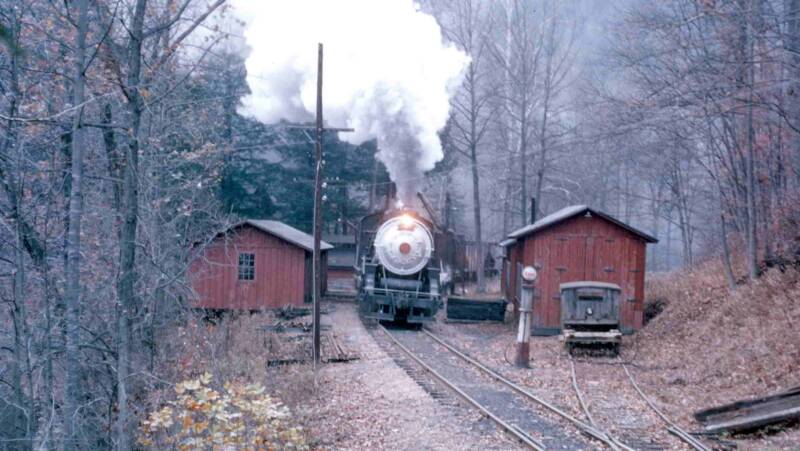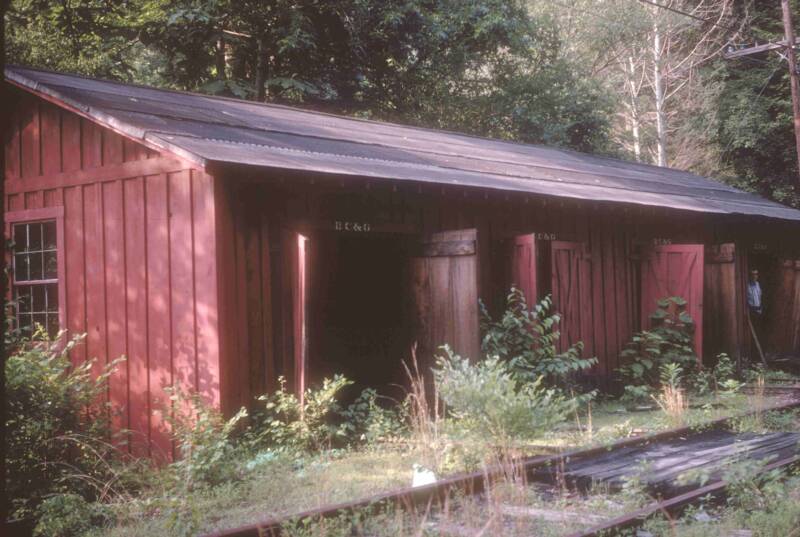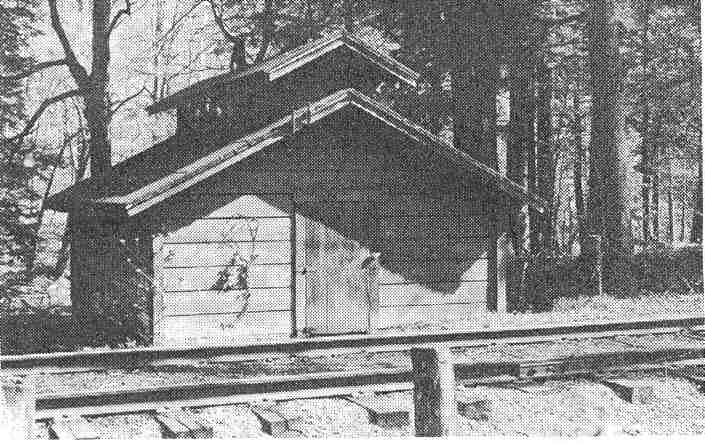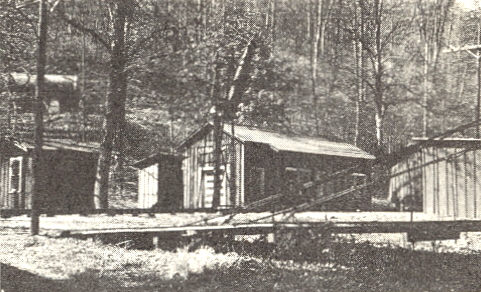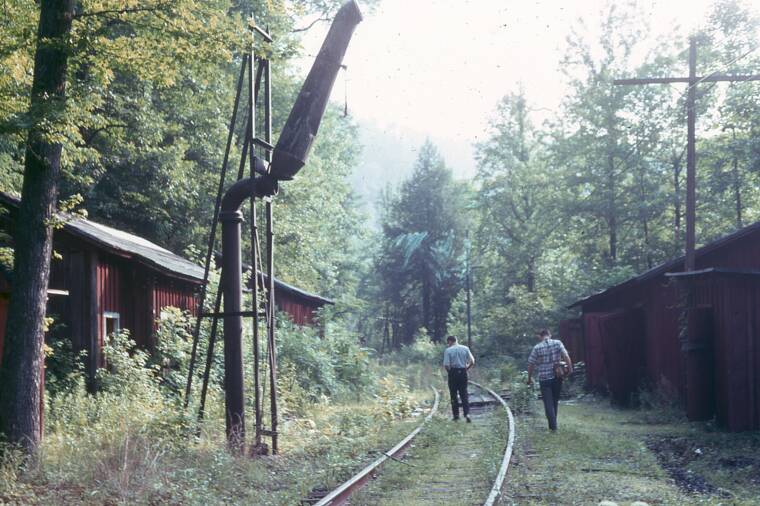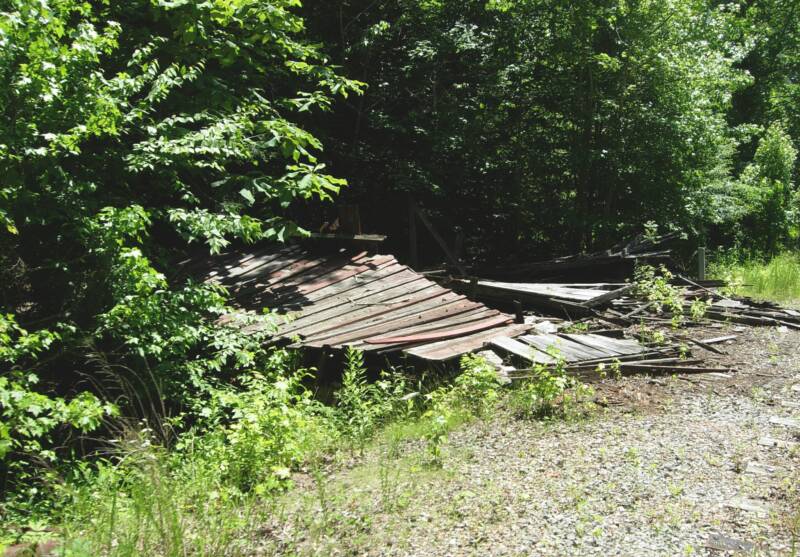Railbus Sheds
Photos above and below by David Marquis, circa 1969
Photo by Brooks Stover, 2007.
RAILBUS 'A' SHED
This fine photograph of the shed that housed Railbus "A" was taken by a modeler and is a real find for anyone who would like to build it. It clearly shows the board and batten construction, the tar paper roof, and the exposed roof rafters. Also of interest are the three sets of paired 12-pane windows, the small light fixture and the pedestrian door within the larger door for the railbus.
Notice that there is a second shed directly behind this one mostly obscured by underbrush. It appears to have a similar shape.
Just beyond where the Dundon Yard joined the BC&G main stood a group of small, rarely photographed sheds. One of the BC&G's distinctive angle iron water plugs was also located here as well as a gasoline pump for the railbuses. This group of sheds is the subject of this page. Thanks to David Marquis for providing several of these rare these rare photos.
OTHER SHEDS
Looking west back toward Dundon, the Railbus "A" shed is on the right with the gas pump in the foreground. On the opposite side of the track is shed that is believed to have housed a speeder, maybe more. The silver angle-iron water spout is in the distance on the right. A better view of a similar spout is in the SWANDALE section.
This pile of lumber, photographed in 2007, is all that remains of the sheds that once stood in this area. It is almost certainly the shed visible in the distance in the Slavy photo circa 1970s (above).
Photo by Larry Fellure, December 1963
This photo was taken just days before the final run to the Rich Run Mine and from almost exactly the same location as the Marquis' shot. The Buffalo Creek is down the embankment to the left. Notice the Esso globe on the gas pump. Even though the line is about to close, the buildings are in excellent condition and well painted. The line had a reputation for taking good care of all the equipment and property. There is an interesting structure on the railcar in front of the railbus shed.
Here is a photo of the railbus shed complex looking in the opposite direction. The building on the right inspired a structure on the author's layout. Note the 'BC&G' sign again.
The date of this photo is unknown but again the structures look in fine shape for a shortline. This photo appears on page 27 of William Warden's book, "Buffalo Creek & Gauley". It's the only photo from this direction I've ever seen. The building nearest the camera on the left is the refered to in the book as the "home for Bradley's Railbus 'B'". The farthest building on the left was for Railbus 'A'.
According to Bobby Caruthers, water was fed to the water plug from an old tank car up on the hillside. Years earlier, a wooden water tank sat here.
Photo from Richard Manning Collection - Date unknown
Here's a closer view of the shed believed to have housed speeders, among other things. The planking between the rails certainly suggests a railcar was in the portion of the shed nearest the camera. There appears to be four sets of double doors along the track side. Notice the classic board and batten construction and the "BC&G" sign over each set of doors. Was there any question whose shed it was?
Photo by David Marquis - circa 1969
This structure, identified as a "sand drying shed" in KINGPIN, Summer 1964, seems more likely to actually be the ice house.
Patsy Baughman and Roger Nutter both recall an ice house near Mr. Bradley's residence and the Dundon Office. After considerable dialog with Patsy and her husband, Herald, there is very strong evidence that the ice house is, in fact, visible in the Marquis photo (above right) as well as the Fellure photo (below right). Further it seems the black and white photo from the Summer 1964 issue of KINGPIN (right) incorrectly identifies the building with the cupola as a sand drying shed, when it is actually the ice house.
Both Patsy and Roger recall that the ice house was just a short distance from Bradley's house, near the creek and near the railbus sheds. They also both recall it was near the tracks across from the railbus shed. Both these recollections are exactly consistent with where the cupola building appears in the photos.
Patsy discovered that by clicking on both the Marquis and Fellure photos to enlarge them that Bradley's house is actually visible in the background through the trees, giving further support to this theory. Thanks for this "discovery", Patsy!
Further adding credence to the notion that the building with the cupola is an ice house is a ice house of of almost identical design, though somewhat bigger, on display at a restored 1920's village in Flint, Michigan. I will post a photo of that structure on this page when I can.
Ice House
Based on the information in the yellow box to the left, it would seem that this structure was incorrectly identified in the KINGPIN. Besides the points made in that commentary, it doesn't make sense that there would have been a sand house here when there was one in the Dundon shop area directly adjacent to the sand tower.
Photo by Bob Slavy circa 1970s
This Bob Slavy photo was taken years later. The spur to the railbus shed is still partially visible as is the gas pump. Notice how much the vegatation has already reclaimed the site of the railbus shed.
Suspension Foot Bridge
For some time Patsy Baughman had been asking if anyone had seen a photo of the suspension foot bridge that crossed the Buffalo Creek near the railbus sheds and icehouse and Mr. Bradley's house. Frank Criswell remembered having seen a partial view of the bridge in the Summer 1964 issue of KINGPIN, a newsletter of the Mid Central Division of the NMRA. The photograph is enlarged and reproduced here.
The exact location of the bridge can be seen in the map of Lower Dundon prepared by Phil Bonzon.
Water Tank for Spout
Also visible on the left side of the picture up on the hillside is the water tank that provided the pressure head for the locomotive water spout. At one time Bobby Caruthers indicated that this tank was from an old railcar.
These two photos, taken in July 1969 by Richard Bradley, are among the best color photos of this water plug and the only view (below) of the small shed that sat directly behing the plug.
